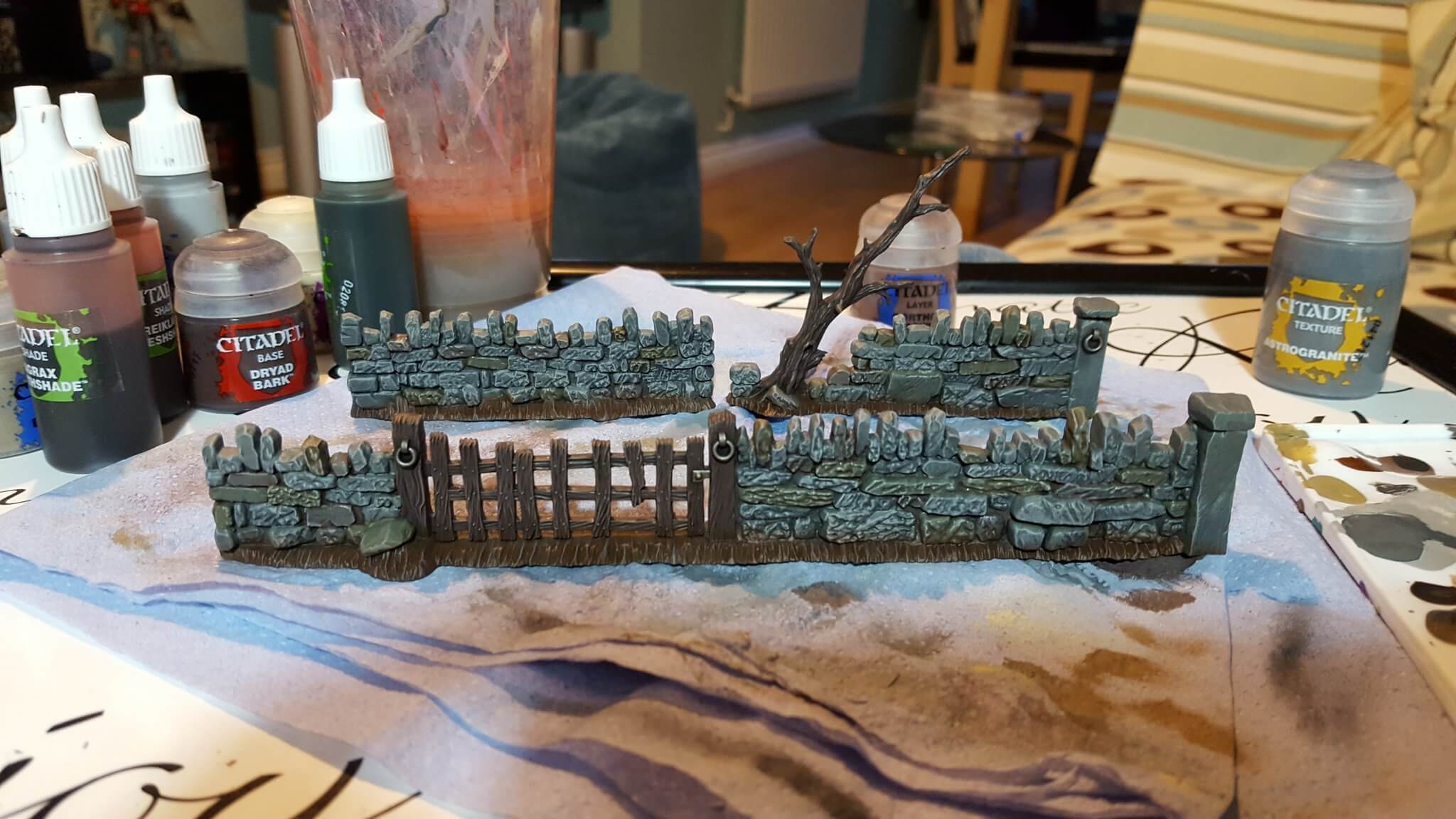My plan of ploughing into my Space Wolves has worked quite well although I would have liked to have got further than I did. I believe that I’ve finally managed to work out a simple, effective and straight forward way of painting up a Space Wolf to a decent gaming standard. It does have more steps in than I’d like, but the actual result is enough to satisfy me. This is for the main armour colour rather than any other bits! (other bits will follow as time goes on).
The first task is to airbrush the armour with The Fang over a black undercoat. You need to get an overall coverage although don’t be afraid to apply thinner layers in the shadow areas which (with the black undercoat) will create a darker area.
Next up, airbrush the armour with Russ Grey. What you’re aiming to achieve is layers on the upper and front surfaces, it’s almost a Zenithal highlight but not really. The purpose is so that you get The Fang from the last step showing where you’d naturally get shade.
That’s it with the airbrush 🙂 You now need to mix up a 50/50 mix of Adeptus Battlegrey* and Abaddon Black. This needs to be thinned and painted into the deep shadows on the marine – under the leg greeves, between fingers, lower part of the kneepad etc. Then you need to line the edges of the little plates and grilse with the paint. You don’t need to be “accurate” but try and be tidy, you’re painting not washing. I also just put a fine line on the feet, just where you’ve got ridges of armour that meet. If I were doing a display piece I’d likely do all sorts of things like darkening the colour further and building up many layers, this is a gaming piece and this shadow is enough to provide the contrast necessary. Now using the same colour block in the ribbed sections behind the knees, palms, etc.
* Adeptus Battlegrey is an old Foundation paint, the equivalent is Mechanius Standard Grey – to be honest any grey would work, what you’re after is a grey that is darker than The Fang but not black.
Now paint neat Nuln Oil over the ribbed areas to provide a bit of depth and darken it. Please be as neat as possible with this as Nuln Oil will stain the armour which isn’t the effect you’re aiming for!
Now it’s onto the more enjoyable bits. Thin down some Russ Grey and apply highlights onto the edges of the armour. I try and get my paint to the thickness where I finish the highlight in 2 ~ 3 layers, this results in quite a smooth transition. You’re looking at applying the highlight a little farther than airbrushed layer of Russ Grey but not much, you certainly don’t want to be highlighting the shadow areas of the miniature! You can use this to define the edges of armour and smooth out any oddities in the plastic miniature too – namely round the kneepads and feet (which are always crap). You can also line the inner of the shoulder pad if it’s going to be done normal armour colour.
Finally thin down some Fenrisian Grey to roughly the same consistency as the last step and use this to do some more edge highlighting. You’ll need to highlight the highlight done in the last step – so a smaller area than you painted previously. This is actually the easiest step in the whole process and will make the miniature ‘pop’ – paint one leg and then compare it to the other to see what I mean.
Overall the secret of the highlights (and infact shadow too) is you get the consistency of your paint right and apply the paint to the right bit of the miniature. Although it does mess with your brain (or at least mine), you’re not looking at creating something realistic, instead you’re looking to emphasise the edges of the armour and make them appear crisp and sharp or dark and shadowy, even if the physical piece isn’t. I tend to paint far too realistically which results in quite a bland miniature that doesn’t stand out close up or at a distance.
I use a Rosemary & Co. No1 brush for all of the above steps. which gives me a decent reservoir of paint and good control. You’re not looking to get lots of moisture in the brush either, if you paint a straight line and get a little bloblet of water at the end of it then you have too much liquid on your brush! You also should never have any paint at the ferrule (metal part) of the brush, a standard brush you’ll tend to only have paint from the tip to about half way up the bristles. I tend to drag the brush through the paint and towards empty palette, rotating the brush between my fingers as I come out the the paint to achieve a decent point. If I’ve thinned the paint too much then I might have to just “paint” on a piece of kitchen towel to remove the liquid. Although I will use the side of the brush to paint highlights as a general rule I’ve been painting them on. The molds of the plastic space marines aren’t particularly sharp so relying on the edge of the miniature results in a poor highlight.
Finally I cannot emphasise enough that you need to look after your brushes. They’ll perform so much better if you regularly rinse them out during a session and give them a clean with brush soap every now and again.
